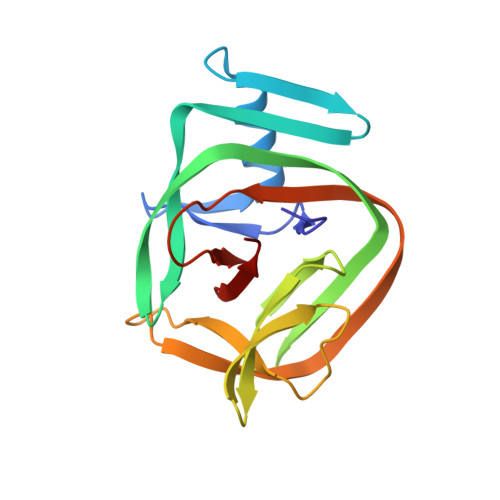Structure-based engineering and comparison of novel split inteins for protein ligation.
Aranko, A.S., Oeemig, J.S., Zhou, D., Kajander, T., Wlodawer, A., Iwai, H.(2014) Mol Biosyst 10: 1023-1034
- PubMed: 24574026
- DOI: https://doi.org/10.1039/c4mb00021h
- Primary Citation of Related Structures:
4O1R, 4O1S - PubMed Abstract:
Protein splicing is an autocatalytic process involving self-excision of an internal protein domain, the intein, and concomitant ligation of the two flanking sequences, the exteins, with a peptide bond. Protein splicing can also take place in trans by naturally split inteins or artificially split inteins, ligating the exteins on two different polypeptide chains into one polypeptide chain. Protein trans-splicing could work in foreign contexts by replacing the native extein sequences with other protein sequences. Protein ligation using protein trans-splicing increasingly becomes a useful tool for biotechnological applications such as semi-synthesis of proteins, segmental isotopic labeling, and in vivo protein engineering. However, only a few split inteins have been successfully applied for protein ligation. Naturally split inteins have been widely used, but they are cross-reactive to each other, limiting their applications to multiple-fragment ligation. Based on the three-dimensional structures including two newly determined intein structures, we derived 21 new split inteins from four highly efficient cis-splicing inteins, in order to develop novel split inteins suitable for protein ligation. We systematically compared trans-splicing of 24 split inteins and tested the cross-activities among them to identify orthogonal split intein fragments that could be used in chemical biology and biotechnological applications.
- Research Program in Structural Biology and Biophysics, Institute of Biotechnology, University of Helsinki, P.O. Box 65, Helsinki, FIN-00014, Finland. hideo.iwai@helsinki.fi.
Organizational Affiliation:



















